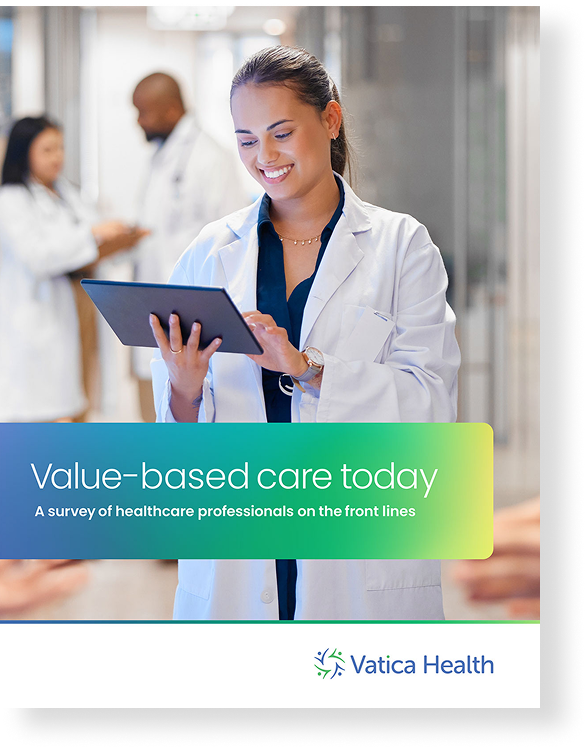Blog

April 28, 2025
Technology in risk adjustment: opportunities and pitfalls
One area seeing a surge in AI-driven innovation is HCC coding and documentation. A growing number of tools now aim to automate risk adjustment coding, promising increased efficiency and reduced costs. While these solutions offer potential benefits, they also present serious challenges that health plans and providers must carefully evaluate.
Key challenges of AI-only approaches:
- Limited ability to interpret unstructured data: AI struggles to understand free-text clinical notes (e.g., progress notes, discharge summaries), where critical diagnoses and context often reside. Subtle clinical cues may be misread—or missed entirely.
- Over-reliance on structured fields: Many AI tools depend on structured data such as problem lists, which are often outdated or incomplete. These systems may miss clinical nuance that a trained human reviewer would catch.
- Inconsistent diagnostic accuracy: A recent JAMA Network Open study found that AI models had variable diagnostic accuracy when compared to clinicians. While AI sometimes outperformed physicians, it underperformed in other cases—highlighting the need for human oversight.
- Risk of perpetuating bias: AI systems trained on incomplete or biased datasets may continue those flaws—overlooking important diagnoses or populations with specific demographics or comorbidities.
- Provider abrasion and alert fatigue: Non-validated alerts can create noise, increasing the cognitive load for providers and eroding trust in the system. This can lead to alert fatigue and lower adoption.
While these solutions have extraordinary potential, they are best used to enhance—not replace—clinical services. Without expert validation, AI-driven coding can lead to incomplete or inaccurate documentation, which poses serious compliance risks. Inaccurate coding also jeopardizes fair reimbursement, ultimately affecting the resources available to deliver high-quality care.
Value-based care requires more than just technology
CMS has made it clear: the future is value-based. Their goal is for all Medicare Advantage and Traditional Medicare beneficiaries to be in two-sided risk arrangements by 2030. This shift demands accurate coding and a deep understanding of each patient’s health profile to ensure providers are reimbursed fairly for the care they deliver.
Success in value-based care hinges on getting risk adjustment right. Payments must reflect the actual complexity of a patient’s condition—otherwise, providers are left under-resourced, and patient care suffers.
While AI can assist with data mining and workflow efficiency, it cannot replace clinical judgment. To truly optimize performance, organizations should consider hybrid solutions that integrate technology with trained clinical professionals. These solutions can:
- Identify meaningful diagnostic codes
- Close care gaps
- Minimize noise and false positives
- Reduce provider burden
- Improve compliance and audit readiness
By combining tech with human expertise, providers can improve coding accuracy, enhance patient outcomes and drive stronger value-based care performance.
Evaluating risk adjustment solutions: three key questions
As new tools flood the market, it’s critical to separate hype from value. Here are three questions to guide your evaluation:
- Is the solution provider-centric?
Technology should be intuitive, user-friendly and designed to integrate seamlessly into the provider’s workflow. It should work with the existing EMR and intelligently mine relevant data to enhance—not disrupt—care delivery. - Does the solution offer comprehensive clinical support?
In addition to digital tools, providers benefit from access to clinicians who understand the technology and act as extensions of the care team. These professionals help reduce administrative burden and ensure optimal implementation—at no cost to the practice. - Is coding validated by certified experts?
Many AI tools surface suggested codes from questionable data sources, without clinical review. This can increase audit risk and compliance concerns. Look for solutions that use certified coders or clinicians to review and validate coding recommendations.
Conclusion
Technology is an essential enabler, but it’s not a replacement for clinical expertise. To achieve the full promise of value-based care, organizations must adopt solutions that combine intelligent technology with trained clinical support. This hybrid approach ensures accuracy, reduces risk and empowers providers to focus on what matters most: delivering exceptional care.
How Vatica Health can help
A pioneer in provider-centric technology, Vatica offers solutions that directly improve clinical outcomes, efficiency and financial performance. Vatica nurses are deployed at the point of care and armed with powerful technology. The company, ranked #1 among risk adjustment software vendors, is accelerating the transformation to value-based care by helping providers, health plans and patients work together to achieve better outcomes. Visit vaticahealth.com to learn more.
Report
Value-based care survey
Physicians and executives give practical feedback from the front lines. To assist in your transition to VBC, learn new findings from your colleagues who are experiencing its various challenges and opportunities.
Learn more »
Resources
Read our latest thoughts
on healthcare

Subscribe to Vatica Voice
Get our latest news and insights delivered directly to you.
Adjust your approach to risk adjustment
Talk to one of our risk adjustment experts today to see how we can help you deliver better performance and stronger compliance while closing gaps in care.